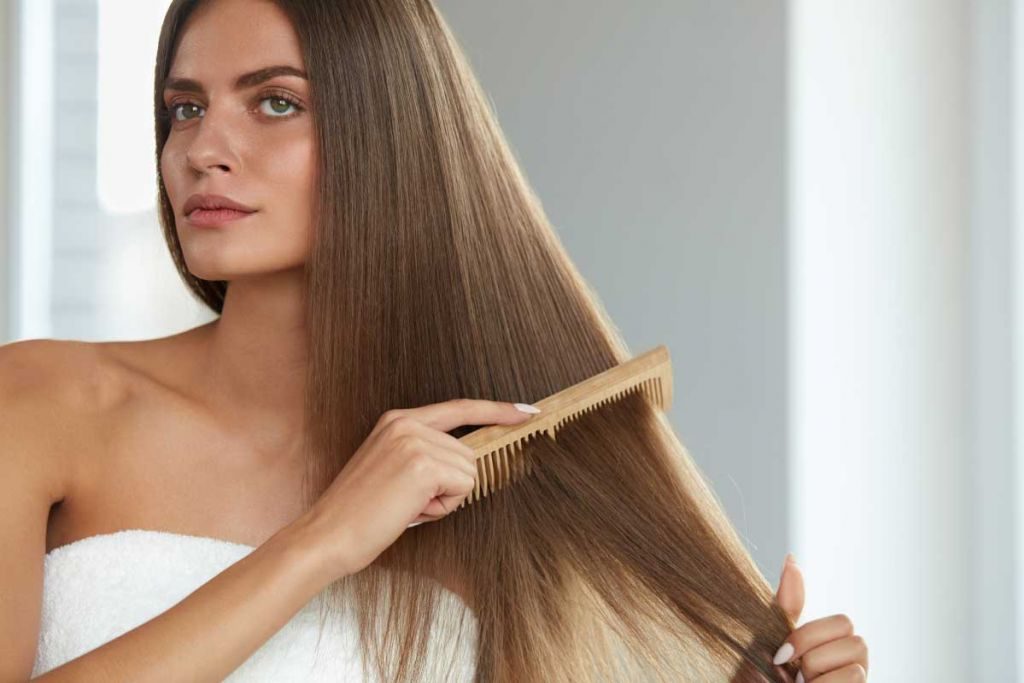New hair care tip. PEH balance: proteins, emollients, humectants
Wise hair care requires maintaining the balance between the substances applied to strands daily. The most important are the ingredients that are added to shampoos, masks, conditioners and other beauty products designed to take care of strands. The very substances are proteins, emollients and humectants. How to apply them in the right way?
PEH balance: Proteins
1. What are proteins?
Human hair is made of amino acids, alike proteins. Their task is to fix hair structure which results in improving hair condition significantly – hair is no longer brittle. It’s worth realizing that proteins serve naturally curly and wavy hair really well because they enhance the curl even more.
Due to the size of molecules, proteins are divided into three groups. We can distinguish:
- Amino acids – the smallest molecules; for example they are arginine and l-arginine.
- Small-molecule proteins – penetrate hair structures; they are keratin, elastin, collagen, silk.
- Big-molecule proteins – affect hair surface, can be found in food products like egg yolk, kefir, yogurt and gelatin.
2. How to apply proteins?
Frequency of protein use is determined by hair porosity type. For example, low porosity hair reaction to proteins is rather negative – the hair loses the volume. When it comes to high porosity hair, it’s hard to detangle, is frizzy and static. In this case, application of proteins should sort this unruly hair problem out. It’s recommended to supply hair with proteins 2-3 times a month. If you increase the frequency, you can expect the strands to become brittle and dry; also, it might become troublesome to detangle it.
3. Types of proteins
In most cases proteins can be found in hair masks and conditioners. Look for: keratin, collagen, silk, elastin as well as wheat and maize proteins.
PEH balance: Emollients
1. What are emollients?
Emollients are lubricating substances that protect hair against water loss, lock moisture in and create a shield around each hair shaft. Their task is to block the outlets which water might escape from. Emollients are mostly made of hydrophilic acids and fats.
2. How to apply emollients?
Use of emollients should be adjusted to the current state of hair. The right emollient application technique promotes smooth hair, easiness of detangling and shine boost. It’s recommended to combine use of emollients with humectants on either a very dry or humid day. On the flip side, frequent application of this substance might turn hair into greasy-looking. But hair deprived of emollients is static and frizzy.
3. Types of emollients
Did you know that emollients can be found in both beauty and food products? For example, they are present in sunflower oil, olive oil and lard. Also coconut oil, argan oil, shea butter, silicones and liquid paraffin belong to emollient group.
PEH balance: Humectants
1. What are humectants?
Humectants are hygroscopic substances that attract water, absorb it from the environment and store in hair. However, if they don’t receive the right amount of water from the outside, humectants start taking it from skin and strands, which leads to dehydration. For that reason, humectants must be used together with emollients, which protect water loss.
2. How to apply humectants?
Application of humectants depends on air humidity. If a day is rainy and foggy, the amount of humectants applied should be reduced. Otherwise, hair cuticles open which results in poorly-looking hair. The situation will be exactly the same on dry day – hair will absorb water from the air. For that reason, it’s best to apply humectants when the temperature is moderate.
3. Types of humectants
The easiest way to find a humectant is to buy regular hair masks and conditioners. Humectants can be recognized by the following names: urea, hyaluronic acid, d-panthenol, glycerin, aloe, sodium lactate.



Leave a Reply